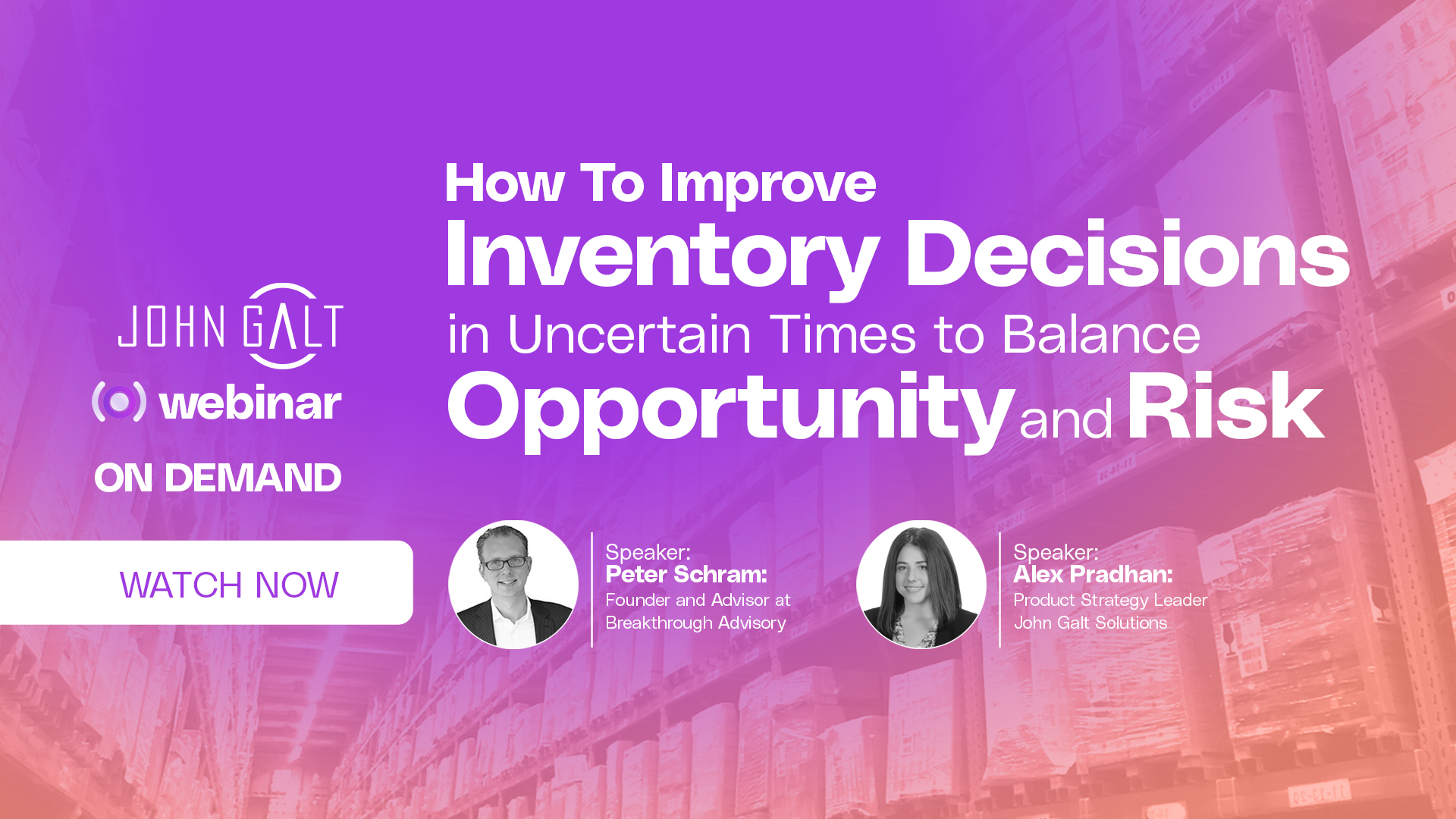Some days it feels like you have too much inventory and not enough at the same time. In fact, for almost all supply chains, that’s more or less true every day. It’s impossible to grow profitably and keep customers happy without managing your inventory wisely, but after the disruptions of World War C (for Covid), many supply chain managers find themselves stuck with a new conundrum. On the one hand, too much working capital is still trapped in excess inventory, as it has been for many years. But today’s unpredictable supply constraints, uncertain lead times, and fluctuating demand signals have distorted inventory levels in new ways. Even though our tendency is often to hold too much inventory in finished goods, today’s unprecedented challenges are making it supremely difficult to meet service levels for key customers.
Companies around the globe, from e-commerce giants like Amazon to small and medium businesses, are getting slashed by this two-edged sword. Instead of retaining WIP inventory at holding points before value-add manufacturing steps, it may be wiser to endure the higher cost of pushing business-critical finished goods SKUs to DCs even if we don’t have orders for them, yet. Perhaps. At the same time, we must still try to right-size safety stock and buffer pools for products with intermittent, unpredictable, and just-plain-low demand profiles (a.k.a. slow-moving items). This two-way dilemma appends the challenge of supplier and transportation issues to the scourge of already bloated stockholding locations that have developed as the supply chain stretched and expanded over the years.
Saying no to whipsaws, shortfalls, wretched excess, and trapped working capital.
Supply chain teams have found through hard, real-world experience that interactions between echelons of a multi-tier supply chain cause a whipsaw effect that amplifies individual buffering efforts at each location. It’s no surprise that tweaking stock levels piecemeal at separate stages does the opposite of optimizing inventory across all the stages. As work-in-process flows through the supply chain, we must find a way not to overreact to internal demand and supply fluctuations propagating between tiers and departments. Moves made by different (perhaps, ahem, not fully coordinated) teams with narrow-gauge views can trigger shortages and spiraling excesses, resulting in stock being positioned in “all the wrong places.”
The goal is to adapt a multi-stage process to today’s variability and uncertain supply and demand signals. To do that, we must go beyond inventory optimization techniques that assume there’s just one stocking point between the supplier and customer. Such narrow, localized optimizations won’t cut it in a multi-stage chain. We can’t treat, say, the warehouse level separately from the factory level—we must instead calculate what amount of buffer stock is truly necessary at each node, lead times, service level targets, costs, constraints, and sources of demand and supply variability for the entire process to succeed, then set each inventory target accordingly. That calls for some truly advanced math: stochastic algorithms found in a branch of mathematics with the chewy title “multi-echelon inventory optimization” (MEIO).
Research groups like Nucleus have found that MEIO initiatives can reduce inventory by 10—30% for companies across a range of industries. But just as importantly, MEIO can reduce the impact of supply uncertainty by recommending where, how much, and in what form inventory to hold across the network. MEIO ensures that WIP buffers, parts and subassembly stocks, and finished goods pools everywhere are sufficient to accommodate demand and prevent stockouts while taking into account the impact of supply issues. The science goes far beyond what mere mortal managers can do to minimize costs and maximize the customer service performance achieved by the entire complex system.
How to know if MEIO is the right fit for you.
Here are three handy questions that can clarify your organization’s potential fit for an MEIO initiative:
- Is supply chain complexity a significant factor affecting your business performance?
MEIO’s sweet spot is not the relatively simple, single echelon supply chain with only modest volatility. It’s for teams managing a multiple-stage value chain with several/many manufacturing locations and DCs. It’s valuable for planning teams dealing with unpredictable, hard-to-forecast demand, frequent new product introductions, uncertain supply availability, and other variable conditions. - Do you seek greater visibility across your end-to-end value chain?
Visibility across the value chain is imperative for MEIO to achieve its full potential. For instance, a regional distribution center must consider not only the demand from its immediate customer (the DC), but also the end customer that is receiving the products. When that level of visibility exists in the organization, the MEIO solution can obtain the information needed to set optimal targets and inventory levels everywhere. - Do you see MEIO as one important facet of a larger optimization initiative?
The “MEIO journey” transforms the way supply chains position and right-size raw materials, WIP, and finished goods. This transformation may lead certain individuals to change roles and responsibilities. It may provoke new performance measurements. It’s a powerful step you can take to move your organization up the maturity curve significantly—especially if it is used in concert with AI-driven demand planning and forecasting.
If you can answer “yes” to these questions, it’s a good sign that you may be ready for an MEIO initiative that will take your business to the next level. You have many solution options to choose from. We recommend a platform that uses artificial intelligence and machine learning to model your network in real-time. You need an easy-to-use application, rather than an academic toolbox intended for operations research PhDs. At John Galt Solutions, we’ve helped everyone from mid-size businesses considering MEIO for the first time to large enterprises with complex, global supply chains. We can show you how inventory optimization can play into your own supply chain management best practices. Please don’t hesitate to schedule a free consultation with us today.



